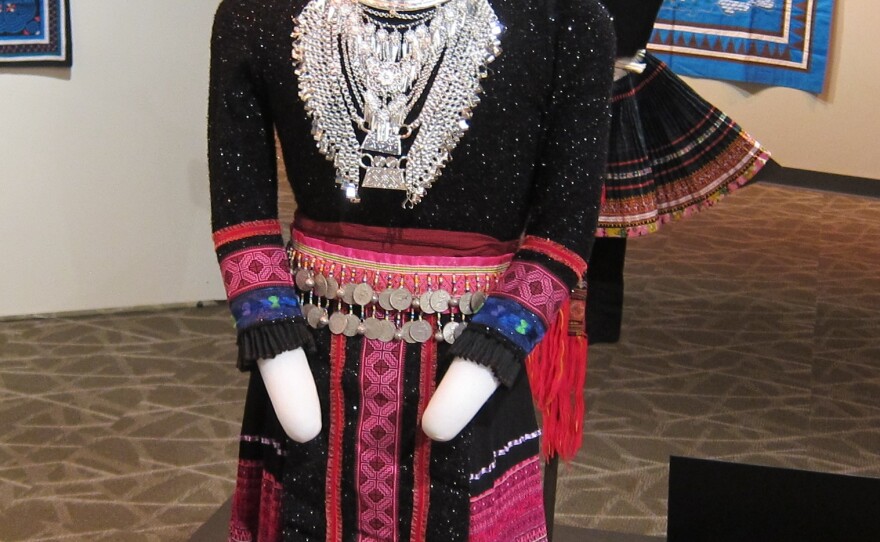The Northern Illinois University Pick Museum of Anthropology is hosting an exhibition and oral history exhibit about the Hmong.
This Southeast Asian group has lived across China, Vietnam, Laos, and Thailand, but has a very recent history. During the 1960s, the Hmong were recruited by the CIA to fight against the North Vietnamese in Laos. The clandestine nature of these operations gave the brief conflict its name, "the Secret War."

Pick Museum Curator Laura McDowell Hopper says the exhibit follows the Hmong’s escape to Thailand and beyond after North Vietnam emerged victorious.
“The big idea is to talk about how things have changed for Hmong people since coming to America as refugees after the Vietnam War,” she says.

One such refugee is Ge Xiong ( pronounced zhay-zhong), an elementary school teacher who left Thailand in 1979 and settled in Shabbona. He admits the trip was difficult, particularly with his inability to speak English at the time, as well as Illinois’ extreme temperatures.
“We got up in the morning, and it was a total surprise, seeing the town completely covered up with a blanket of snow. That was the most shocking experience," Xiong says as he described the morning after arriving in his new apartment.
Much of the exhibit focuses on transition, both for individuals like Xiong and Hmong culture as a whole. One example of this is story cloths, large tapestries that chronicle a Hmong group’s history. Ge says this custom goes back to weaving, which has a prominent place in Hmong culture.
"Women were judged by their sewing skill, their stitchery skill, and that had been an important Hmong way of life,” he said.
As refugees, many Hmong women used their sewing skills to make ends meet, particularly when there weren’t other jobs available. Xiong says the idea of the story cloth came from this shift to more commercial textile making.
“The design of the story cloth, was probably suggested by someone, knowing that Hmong women have excellent sewing skill,” he said.
While traditional tapestries, clothing, instruments, and jewelry are a prominent part of the exhibit, Hopper says the objects vary in age.
“A lot of especially first-time visitors have an expectation when they walk into the museum that everything that’s in that space is really old, because museums are just repositories for really old things. But the story we’re telling is only 40 years old, so we’ve got things in there that are maybe 40 years old or maybe things somebody made in the last 6 or 8 months," she said.
Hopper notes that same variability extends to the Hmong that assembled the exhibit.
“A lot of the people who participated in this exhibit were maybe born in a refugee camp in Thailand or even born in America when their parents came here. We worked with some people who were in their 20s even,” she said.
Audio placed throughout the exhibit connects the experience of immigrants like Xiong to future generations. He says one example is how Hmong millennials have worked in solidarity with movements such as Black Lives Matter.
"Hmong youth have found themselves in the same situation; that was the starting of Hmong activism,” he said.
In total, a council of 20 Hmong co-curate the exhibit. While this required a greater level of effort and coordination among them and museum staff, Hopper said the results show in the final product.
“The exhibit is so much better than it would have been without their assistance, so I’m thankful for that every single day,” she said.
Many Hmong, including Xiong, hope the collection can provide greater visibility to their people, as well as connect Hmong across generations.
“I hope that they will find it a meaningful experience," he said.
The Pick Museum will host an opening reception for Story Telling: Hmong American Voices on Saturday, April 9th from 2-5 PM. The exhibit itself will run through December.



